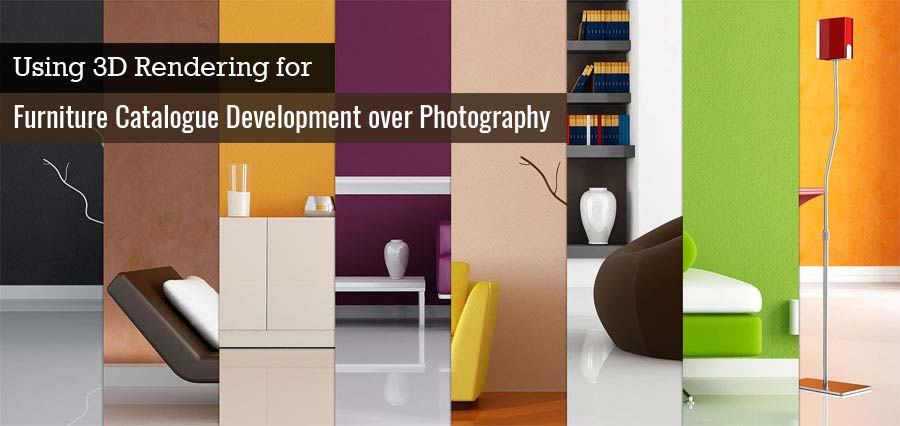From Our Blog
Posted by Prahlad Parmar on August 11, 2016

Furniture manufacturers today often find it difficult to maintain their businesses profitable due to fiercely competitive market. New entrants are coming up with engaging ways to lure customers and have obtained a significant profit share in the market.
Maintaining a cost-effective marketing strategy is thus essential for existing players. It is important for furniture manufacturers to develop visually appealing sales documents to trigger the sale. However, displaying products in catalogues or an advertisement often requires manufacturers to invest in developing high-quality images. However, the traditional method of developing images is costly.
Right from hiring a professional photographer and a designer, to setting up the ambience and decorations, taking a perfect picture involves a lot of time and cost. While you may end up with an appealing picture for the catalogue, it takes the same time and resources for each of the product. Also, once the photos have been taken, it isn’t possible to change the angle, if you wish to for displaying the product in a different manner. Product photography is as such being gradually declining as there’s a better and a cost-effective alternative called 3D rendering.
The photorealistic 3D rendering for furniture is emerging as one of the most efficient ways to develop high-quality images for various marketing and sales materials. Research shows that majority of the manufacturers use computer-generated images for kitchen, bathroom and bedroom catalogues, claiming that 3D rendering has provided better results as compared to professional photography. It is one of the prime reasons why many photography studios have turned themselves into digital studios embracing CGI to survive in the market.
3D rendering offers numerous benefits to help lower the marketing costs:
• At first, it eliminates the time required to develop a set room to create appealing images. Since the models are created digitally, you can easily create different variants of the product using different colors, shape, size, texture effects, room setting, etc. without spending a dollar on actual manufacturing.
• The images developed through rendering technique can be easily manipulated as per the design requirement, camera angle and light setting. Digital models can be easily dragged and dropped to display number of product lines, for e.g., displaying furniture products for kitchen room.
• The 3D rendered images can be easily utilized for catalogues, marketing presentations, trade shows, newspaper advertisements and other sales documents. These high-quality images further helps in driving customer attention and reflects your loyalty towards quality, helping in generating better sales.
• The 3D models for products can be used repetitively without actually having to setup a new set room conditions or hiring a professional designer and photographer. It thus reduces the cost and time considerably and allows you to focus your efforts in maintaining manufacturing quality.
• In photography, there are always restrictions. You always have limited choices on what to build, what materials to use and what furniture products you can get hold of at the time of photography. Whereas, in CGI, the massive 3D libraries can be easily utilized to select the product you want. Simply by changing the material type, the digital model accurately represents the actual product.
With all these benefits, 3D rendering services are being increasingly utilized by furniture manufacturers over traditional product photography. It not only helps in lowering the marketing costs, but also keeps design intent clear and realistic.
About Author: Prahlad Parmar is an Engineering Specialist working at Mechanical 3D Modelling for the past 4 years. He caters critical engineering challenges with ease and performs exhaustive procedures to develop robust, well-engineered and high performance designs. He can always be found in the lab discussing, brainstorming and tweaking designs.
